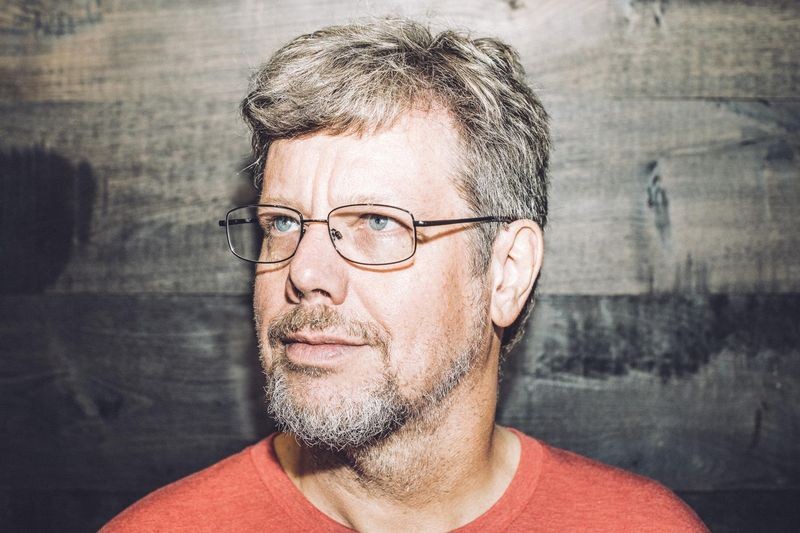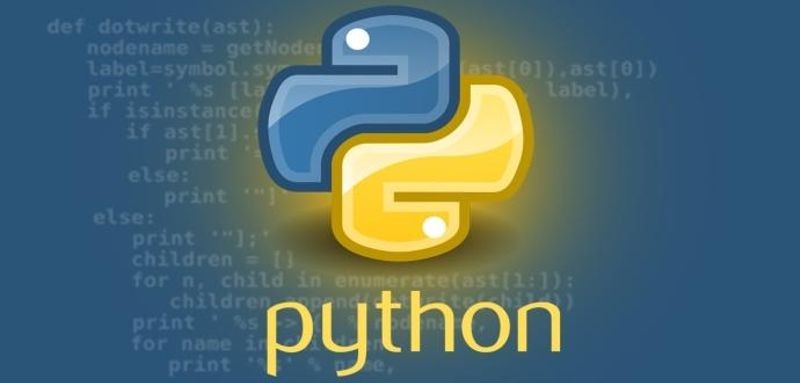
First released by its creator Guido van Rossum in 1991, the Python programming language lies behind an enormous variety of software applications today. Python has undergone continual improvement and has become a powerful yet flexible and easy-to-learn “Swiss Army knife” for programmers and developers. It is used in machine learning, banking, scientific computing, education, video games, math, physics, engineering, and for fast software prototyping by thousands of entities, including Autodesk, Google,Facebook, Microsoft, Dropbox, Alibaba, NASA, and IBM.
On April 28, 2018, Guido van Rossum, with fellow honorees Dame Stephanie Shirley and Dov Frohman-Bentchkowsky, will be inducted in the Computer History Museum’s prestigious Hall of Fellows.

Portrait of Guido van Rossum at the Dropbox headquarters in 2014. Photo by San Francisco-based photographer Dan Stroud (CC BY-SA 4.0 via Wikimedia Commons).
Guido van Rossum was born the eldest of three children in 1956 in The Hague, Netherlands. His father, an architect, and his mother, a school teacher, were Dutch pacifists. Van Rossum was introduced to computers as a mathematics major at the University of Amsterdam, where he learned languages, such as ALGOL-60, by reading reference manuals and getting into debates over the merits of ALGOL versus FORTRAN. As an undergraduate, Van Rossum took a job at the Stichting Academisch Rekencentrum Amsterdam (SARA) writing custom applications, utilities, and a job control language for the center’s CDC mainframe.
After finishing a graduate degree in 1982, Van Rossum was recruited by Lambert Meertens to join the Centrum Wiskunde & Informatica (CWI, or the Center for Mathematics & Informatics). There, he initially worked with Meertens and Leo Geurts on ABC, a language designed to be easy to use for scientists without a programming background. ABC was unsuccessful at gaining a user base, and Van Rossum moved on to work on productizing Amoeba, an operating system project created by Andrew Tanenbaum and directed by Sape Mullender.
Tired of writing many small utility programs in C while working on Amoeba, Van Rossum longed for a language that would be simple and convenient for quick and dirty tasks, such as UNIX shell scripts, but with the expressivity of a high-level programming language. Over a holiday break in 1989, Van Rossum decided to write such a language, drawing heavily from the features of ABC, including the use of indentation for statement grouping, the immutability of strings and numbers, absence of type declarations, and data structures like dictionaries and lists. Van Rossum named that language “Python” after the British comedy show Monty Python’s Flying Circus. Python improved upon ABC by being highly extensible through modules, inspired by Niklaus Wirth’s Modula-2. Like ABC, Python was interpreted and interactive, with simple, elegant syntax, and a dynamic runtime type system that lent well to novice programmers, teaching, and rapid prototyping. Python’s design philosophy is guided by the goals of learnability, ease of use, readability, short development times of everyday tasks, and high programmer productivity.
From the beginning, Python was available as free software under a modified MIT license years before the term “open source” was coined, as Van Rossum wanted to share it widely. Forming initially out of mailing lists and newsgroups, the Python community grew rapidly, eventually spawning workshops, conferences, and a nonprofit, the Python Software Foundation (PSF), created to coordinate the community’s efforts and to serve as the owner of Python’s intellectual property, independent of any corporate or governmental entity. The community manages the continuing development and evolution of the language through a formal process of Python Enhancement Proposals (PEPs). Leading members of the Python community jokingly conferred on Van Rossum the title Benevolent Dictator for Life during a meeting in the late 1990s. Van Rossum continues to be a leading evangelist and spokesperson for spreading the use of Python.

Image: techworm.com
It was through the Python community and his work organizing the first Python workshop that Van Rossum moved to the United States, initially in 1994 as a guest researcher at the National Institute of Standards and Technology (NIST) in Gaithersburg, Maryland, and later at the Corporation for National Research Initiatives (CNRI) in Reston, Virginia. At CNRI, Van Rossum worked for Bob Kahn on KNOWBOT, researching the use of mobile agents in distributed systems, and later worked with an internal team (PythonLabs) full time developing Python, for which he applied for a DARPA grant focusing on Python’s use in education under the title “Computer Programming for Everybody.”
Van Rossum became concerned that CNRI would restrict the licensing of future versions of Python and felt it was important to maintain Python as open source software. The threat was held off with help from both the Open Source Initiative (OSI) and the Free Software Foundation (FSF), but the affair precipitated Van Rossum’s departure, along with several key members of PythonLabs, for a web portal startup, BeOpen, in 2000. BeOpen failed in the dotcom crash, but fortunately Van Rossum and the Python Labs team were acquired by another startup, Digital Creations, which became Zope, a web framework company. Both BeOpen and Zope had been users of Python and had an interest in keeping it open source. It was during this time at Zope in 2001 that Van Rossum formally started the Python Software Foundation to safeguard its open source status.
In 2003, Van Rossum left Zope for Elemental Security in San Mateo, California, working on a custom programming language. From 2005 to 2012, Van Rossum made his home at Google, working first on internal build tools, where he created Google’s internal Mondrian code review tool, and later on App Engine, which provides scalable cloud backends for web applications. In 2013, he joined Dropbox, where he is currently working on a static type analyzer for Python. At Dropbox as at Google, Van Rossum continues to spend half of his time supporting the Python community.
Today, Python is used extensively in many different application fields, including web server and cloud backends, machine learning and data science, scientific computing, education, rapid prototyping, and more due in part to its large collection of specialized libraries, such as the Django web framework, and NumPy, the scientific computing package. Its flexibility and convenience makes it particularly useful for gluing small utility programs written in other languages together into a larger whole. It is often used in introductory programming courses, such as at UC Berkeley and MIT. Van Rossum’s design philosophy of convenience, productivity, and extensibility, his commitment to maintaining Python as a free and open source project, and his mentorship and fostering of the Python community have been instrumental in Python’s success as a global language of the internet age.

Since its inception in 1987, when the Museum inducted its first Fellow, computer scientist and US Navy Rear Admiral Grace Hopper, the Fellow Awards at the Computer History Museum have honored distinguished individuals and pioneering teams whose contributions have forever transformed our world. Backed by technology leaders, innovators, and visionaries from around world, the Fellow Awards are a time-honored tradition that celebrate the creative spirit and preserve the stories of each honoree, advancing the world’s collective history and inspiring future generations.
Fellow nominations are open to the public and reflect a diverse range of viewpoints and areas of computing. Final selections are made by a panel of historians, researchers, industry leaders, Museum staff and past Fellows. Learn more about the Fellow Awards.